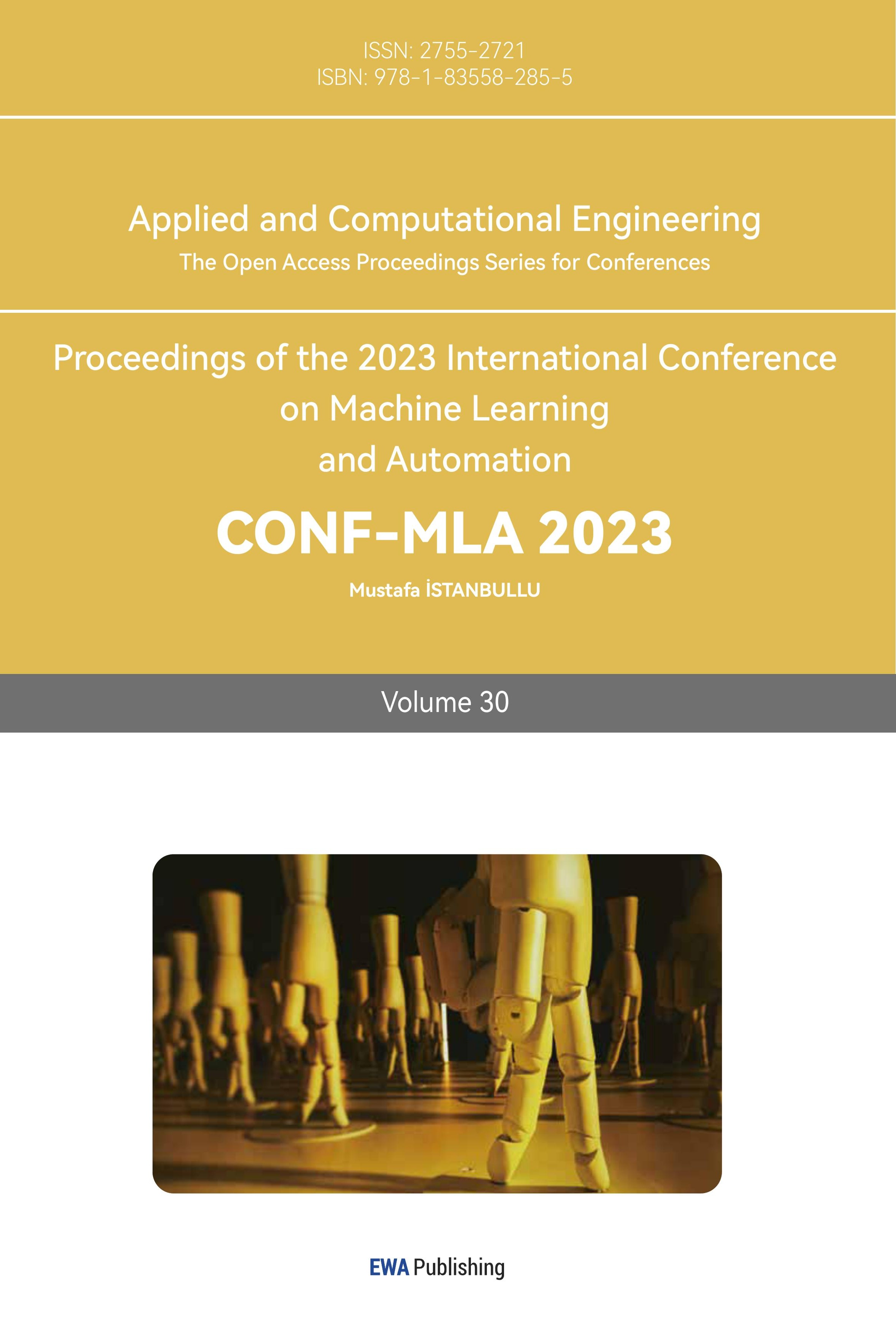References
[1]. Goodfellow I., Pouget-Abadie J., Mirza M., et al. Generative adversarial networks [J]. Communications of the ACM, 2020, 63(11): 139-144.
[2]. Chan C., Ginosar S., Zhou T., et al. Everybody dance now [C]// Proceedings of the IEEE/CVF international conference on computer vision. 2019: 5933-5942.
[3]. Vondrick C., Pirsiavash H., Torralba A. Generating videos with scene dynamics [J]. Advances in neural information processing systems, 2016, 29.
[4]. Zhou Y., Berg T. L. Learning temporal transformations from time-lapse videos [C]// Computer Vision–ECCV 2016: 14th European Conference, Amsterdam, The Netherlands, October 11-14, 2016, Proceedings, Part VIII 14. Springer International Publishing, 2016: 262-277.
[5]. Saito M., Matsumoto E., Saito S. Temporal generative adversarial nets with singular value clipping [C]// Proceedings of the IEEE international conference on computer vision. 2017: 2830-2839.
[6]. Tulyakov S., Liu M. Y., Yang X., et al. Mocogan: Decomposing motion and content for video generation [C]// Proceedings of the IEEE conference on computer vision and pattern recognition. 2018: 1526-1535.
[7]. Dandi Y., Das A., Singhal S., et al. Jointly trained image and video generation using residual vectors [C]// Proceedings of the IEEE/CVF Winter Conference on Applications of Computer Vision. 2020: 3028-3042.
[8]. Unterthiner T., van Steenkiste S., Kurach K., et al. FVD: A new metric for video generation [J]. 2019.
[9]. Kimura S., Kawamoto K. Conditional mocogan for zero-shot video generation [J]. arXiv preprint arXiv:2109.05864, 2021.
[10]. Mirza M., Osindero S. Conditional generative adversarial nets [J]. arXiv preprint arXiv:1411.1784, 2014.
[11]. Wang Y., Bilinski P., Bremond F., et al. G3AN: Disentangling appearance and motion for video generation [C]// Proceedings of the IEEE/CVF Conference on Computer Vision and Pattern Recognition. 2020: 5264-5273.
[12]. Siarohin A., Lathuilière S., Tulyakov S., et al. Animating arbitrary objects via deep motion transfer [C]// Proceedings of the IEEE/CVF Conference on Computer Vision and Pattern Recognition. 2019: 2377-2386.
Cite this article
Yang,Z. (2024). A review of motion generation technology. Applied and Computational Engineering,30,68-73.
Data availability
The datasets used and/or analyzed during the current study will be available from the authors upon reasonable request.
Disclaimer/Publisher's Note
The statements, opinions and data contained in all publications are solely those of the individual author(s) and contributor(s) and not of EWA Publishing and/or the editor(s). EWA Publishing and/or the editor(s) disclaim responsibility for any injury to people or property resulting from any ideas, methods, instructions or products referred to in the content.
About volume
Volume title: Proceedings of the 2023 International Conference on Machine Learning and Automation
© 2024 by the author(s). Licensee EWA Publishing, Oxford, UK. This article is an open access article distributed under the terms and
conditions of the Creative Commons Attribution (CC BY) license. Authors who
publish this series agree to the following terms:
1. Authors retain copyright and grant the series right of first publication with the work simultaneously licensed under a Creative Commons
Attribution License that allows others to share the work with an acknowledgment of the work's authorship and initial publication in this
series.
2. Authors are able to enter into separate, additional contractual arrangements for the non-exclusive distribution of the series's published
version of the work (e.g., post it to an institutional repository or publish it in a book), with an acknowledgment of its initial
publication in this series.
3. Authors are permitted and encouraged to post their work online (e.g., in institutional repositories or on their website) prior to and
during the submission process, as it can lead to productive exchanges, as well as earlier and greater citation of published work (See
Open access policy for details).
References
[1]. Goodfellow I., Pouget-Abadie J., Mirza M., et al. Generative adversarial networks [J]. Communications of the ACM, 2020, 63(11): 139-144.
[2]. Chan C., Ginosar S., Zhou T., et al. Everybody dance now [C]// Proceedings of the IEEE/CVF international conference on computer vision. 2019: 5933-5942.
[3]. Vondrick C., Pirsiavash H., Torralba A. Generating videos with scene dynamics [J]. Advances in neural information processing systems, 2016, 29.
[4]. Zhou Y., Berg T. L. Learning temporal transformations from time-lapse videos [C]// Computer Vision–ECCV 2016: 14th European Conference, Amsterdam, The Netherlands, October 11-14, 2016, Proceedings, Part VIII 14. Springer International Publishing, 2016: 262-277.
[5]. Saito M., Matsumoto E., Saito S. Temporal generative adversarial nets with singular value clipping [C]// Proceedings of the IEEE international conference on computer vision. 2017: 2830-2839.
[6]. Tulyakov S., Liu M. Y., Yang X., et al. Mocogan: Decomposing motion and content for video generation [C]// Proceedings of the IEEE conference on computer vision and pattern recognition. 2018: 1526-1535.
[7]. Dandi Y., Das A., Singhal S., et al. Jointly trained image and video generation using residual vectors [C]// Proceedings of the IEEE/CVF Winter Conference on Applications of Computer Vision. 2020: 3028-3042.
[8]. Unterthiner T., van Steenkiste S., Kurach K., et al. FVD: A new metric for video generation [J]. 2019.
[9]. Kimura S., Kawamoto K. Conditional mocogan for zero-shot video generation [J]. arXiv preprint arXiv:2109.05864, 2021.
[10]. Mirza M., Osindero S. Conditional generative adversarial nets [J]. arXiv preprint arXiv:1411.1784, 2014.
[11]. Wang Y., Bilinski P., Bremond F., et al. G3AN: Disentangling appearance and motion for video generation [C]// Proceedings of the IEEE/CVF Conference on Computer Vision and Pattern Recognition. 2020: 5264-5273.
[12]. Siarohin A., Lathuilière S., Tulyakov S., et al. Animating arbitrary objects via deep motion transfer [C]// Proceedings of the IEEE/CVF Conference on Computer Vision and Pattern Recognition. 2019: 2377-2386.









